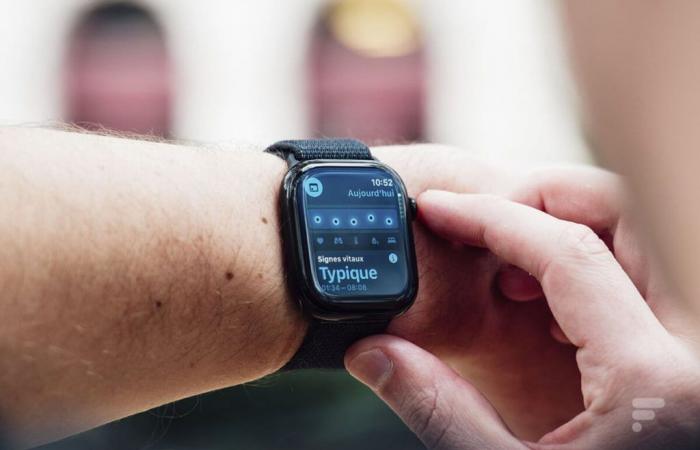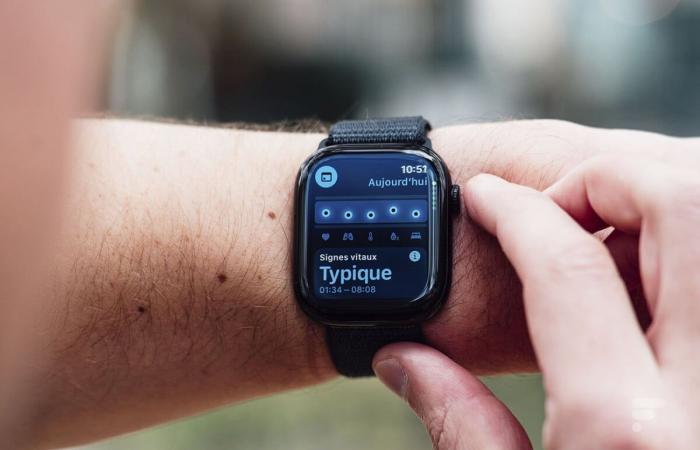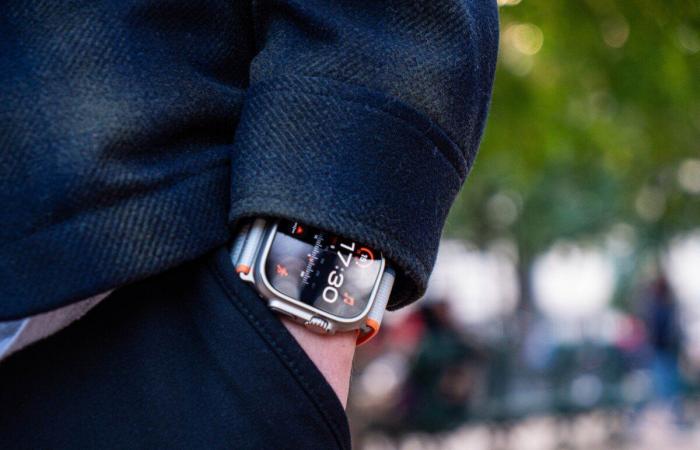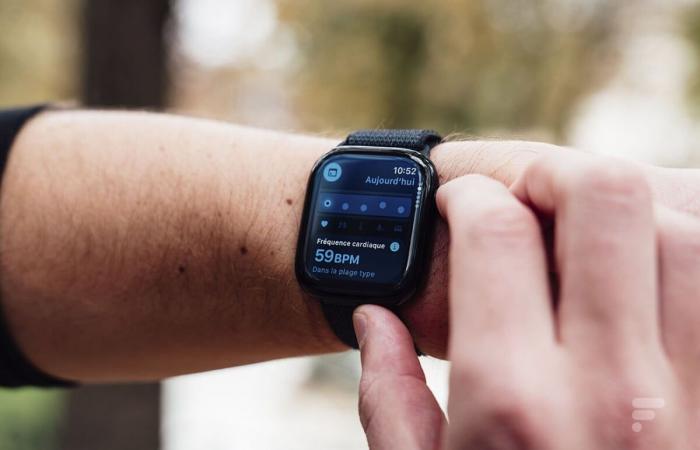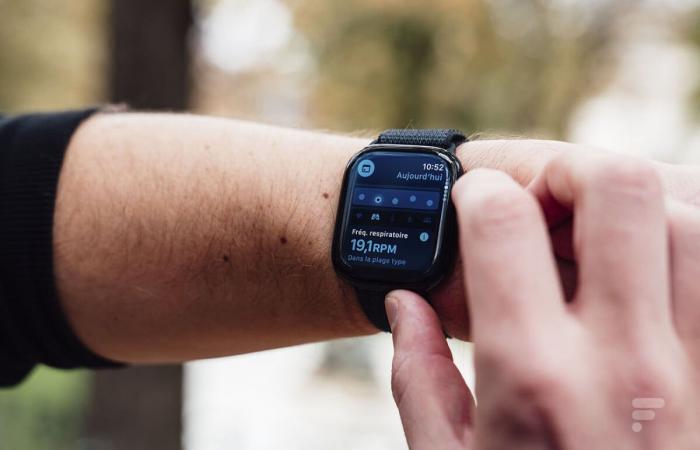With the arrival of watchOS 11, Apple has deployed a new health application on its Apple Watch: Vital Signs. We explain how to use it.
One of the main new features of watchOS 11 concerns daily health monitoring. In addition to its various applications related to sleep, heart rate monitoring or blood oxygen level measurement, Apple has deployed a new application called “ Vital Signs ».
To go further
What is the best Apple Watch to choose in 2024? Our comparison
This aims to recover, every day, all the data that matters most to you. In this file, we will explain to you how it works to understand everything clearly,
A new global health application
L’application « Vital Signs » on Apple Watch will not allow new data to be measured. In fact, it will simply display, on the same screen, several data to allow you to make the link between them.
It was already possible to track your heart rate in the “ Heart rate ”, his sleeping time in “ Sleep » or the SpO2 in « Blood oxygen “. However, unlike what iPhones offer with the “ Health », impossible to find everything on the same screen until now on Apple Watch.
Here, the Vital Signs application – or Vitals in English – therefore aims to monitor this data on a daily basis and to know when one or more go outside the norm.
An app that tracks your sleep
The common point between the different data displayed by Vital Signs is that they are all measured at night.
For heart rate, this is not a measurement during exercise, but at rest, while you sleep. The same goes for taking the temperature on the wrist, which is only done by the Apple Watch during sleep anyway (to ensure a more precise measurement, with fewer variables).
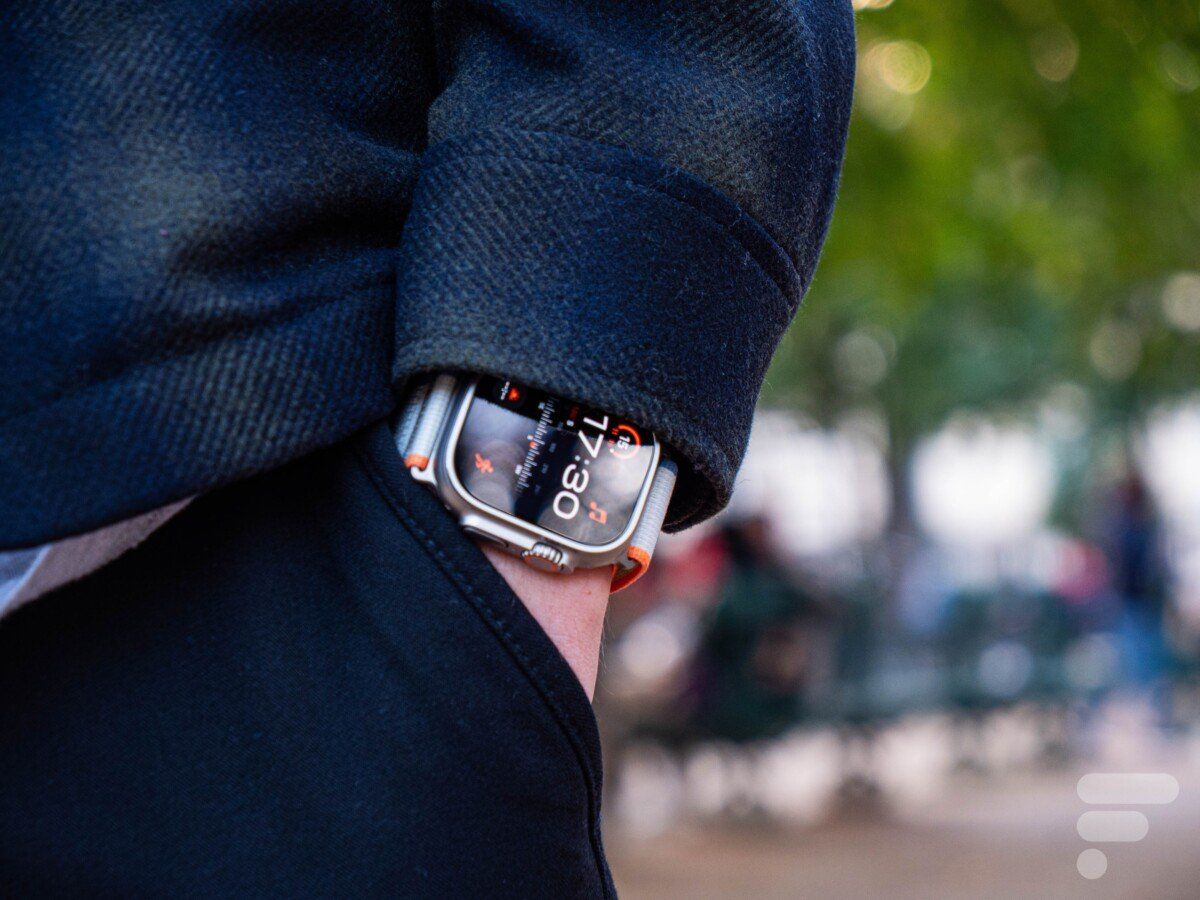
From then on, like the daily fitness score from Google and Fitbit, or the energy score from Samsung, the Vital Signs data will be calculated each morning and will not change for the rest of the day. In this, the application therefore differs from the “ Body Battery » from Garmin which will gradually evolve depending on the activity or stress of the day.
The criteria for the Vital Signs application
Five measurements are taken each night by the Apple Watch to determine your “ Vital signs » for the day:
- resting heart rate
- respiratory rate
- wrist temperature
- blood oxygen
- sleep time
Note that blood oxygen measurement, available on Apple Watches in France and Europe, is not offered on Apple Watches sold in the United States.
Resting heart rate
Resting heart rate is measured by the Apple Watch during sleep. It is expressed here in BPM, for “ beats per minute ».

For better health, it is considered that the resting heart rate must decrease. This is then a sign of a more powerful heart which does not need to beat as quickly to project the same volume of blood throughout the body.
Conversely, an increasing heart rate may be a sign of the body’s need to pump more blood, potentially to treat an illness.
Respiratory rate
The respiratory rate is expressed in RPM, for breaths per minute. This is simply how often you breathe in and out each minute.

To measure it, the Apple Watch will use the accelerometer to finely analyze body movements during the night. It is also this same accelerometer which is also used to detect sleep apnea.
Logically, the more your respiratory rate drops over time, the better off you will be, since your body will be able to better use the oxygen that reaches it.
Wrist temperature
For the temperature on the wrist, Apple obviously expresses the measurement in degrees Celsius. However, as has been the case since the arrival of the temperature sensor on Apple two years ago, the firm remains cautious.
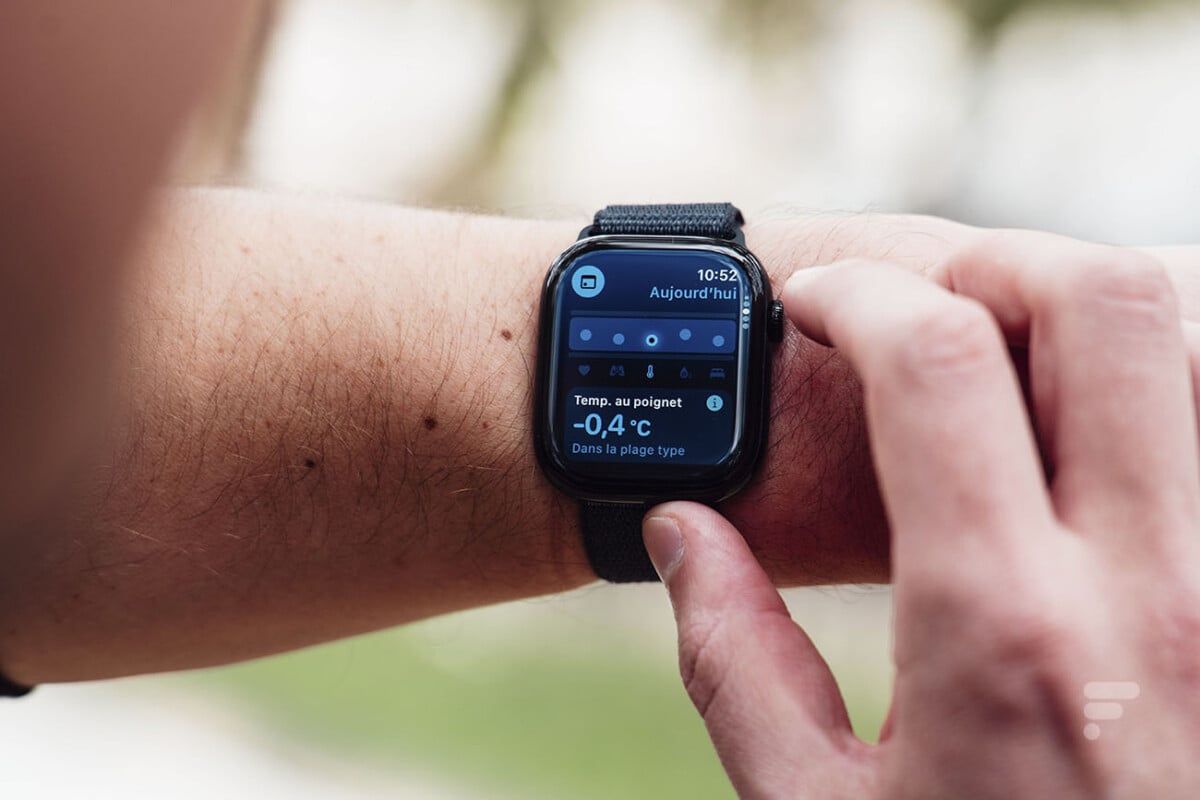
Thus, the Vital Signs application does not give any absolute value and simply indicates the temperature difference compared to the norm, for example “ -0,22 °C » or « -0,4 °C ».
Not surprisingly, a temperature that is too high compared to the norm can indicate a fever, sports training too close to sleep time or a dinner that is too heavy. Ideally, this data should not change too much from one night to the next, neither upwards nor downwards.
Note also that the wrist temperature measurement is only integrated into the Vital Signs application on the Apple Watch Series 8, Series 9, Series 10, Ultra and Ultra 2. The previous models do not in fact have a temperature sensor. temperature.
Blood oxygen
The main role of blood is to carry oxygen throughout the body using red blood cells. Logically, the blood must therefore be full of oxygen and, to check this, we therefore use the measurement of blood oxygen (SpO2).
This blood oxygen saturation level is expressed as a percentage and a healthy person is generally considered to have an SpO2 between 95 and 100%.
In the Vital Signs application, it is therefore the evolution of this rate night after night that will be checked.
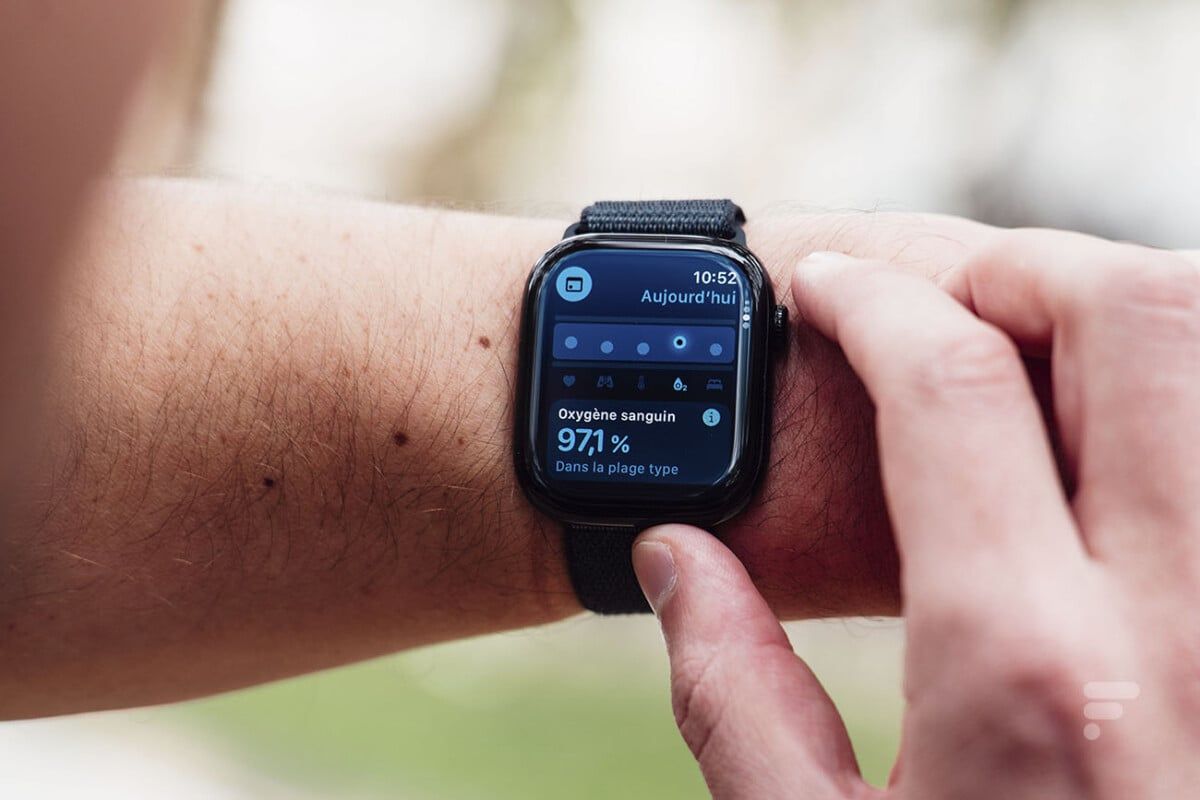
The idea here is above all to check that the SpO2 remains above 95% and does not fall below 90%. However, in a specific setting – for example at high altitude – a score below 90% can be a sign of a respiratory disease.
It should be noted that blood oxygen measurement in the Vital Signs app is not offered on the Apple Watch SE 2022, as the watch is not equipped with a pulse oximeter.
Sleep time
Sleep time each night is expressed in hours and minutes.
Obviously, it will be advisable to get enough sleep every night, but, here too, it is essentially consistency that will matter in the Vital Signs application. The app will ensure that you get regular sleep night after night. It can alert you if you slept too little one night or, on the contrary, if you sleep too long on the weekend.
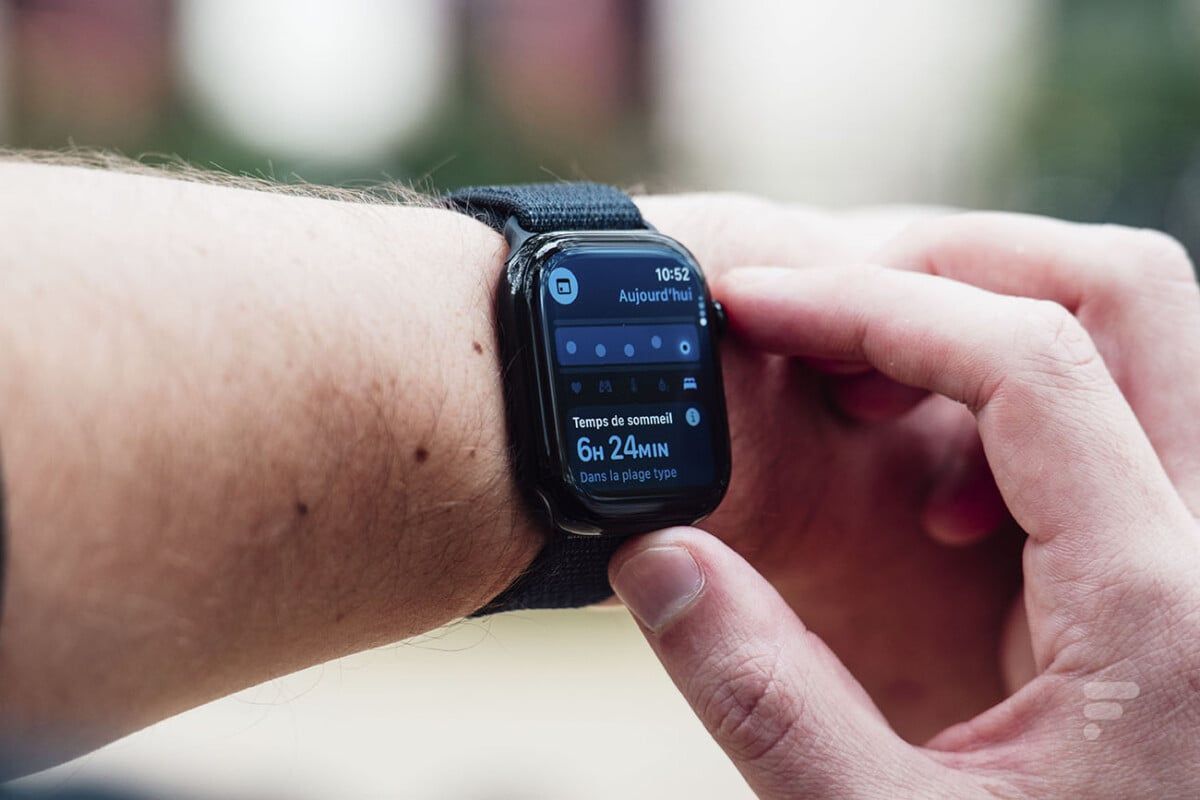
On the other hand, the Vital Signs application only indicates sleep time and not its quality or the different phases. To find out more, you will need to turn to the dedicated Sleep application.
Health data that must be calibrated
As you can see, the Vital Signs application works by evaluating your data from last night compared to a typical range.
However, to establish this typical range, the application and the Apple Watch must know you well enough. This is why you will have to wait a few days before calibrating this data. It is only after seven days – and especially seven nights – that the application can be consulted and will be able to give you your different trends.
Subsequently, the typical range is refined night after night based on the average of the previous seven nights.
Alerts in the event of abnormal health data
Every day, the Vital Signs application will determine if your data is normal or if it deviates from it.
Concretely, if the values appear in the blue band, this means that your data is normal and in continuity with last week. On the other hand, if they pass in the pink zones, above or below the blue band, then these are anomalies.

Obviously, occasional problems should not be a cause for concern. Everyone experiences insomnia and sleeps only two or three hours a night from time to time, or drinks a little too much alcohol, which can increase body temperature. However, if the application notices that two ” vital signs » come out of the norm the same night, it will then display a notification.
The application will therefore allow you to take the lead by detailing the possible causes of these variations. Enough to encourage you to make an appointment with the doctor if, for several nights in a row, your breathing and heart rate have increased considerably.
Apple Watches compatible with the Vital Signs application
The Vital Signs application is available on Apple Watches thanks to watchOS 11. It is therefore available not only on the new Apple Watch Series 10, but also on several previous models:
However, depending on the models, Vital Signs may be more limited. Therefore, temperature measurement is only offered on the Apple Watch Series 8, Series 9, Series 10, Ultra and Ultra 2.
Furthermore, blood oxygen measurement is not available on the Apple Watch SE 2022.

